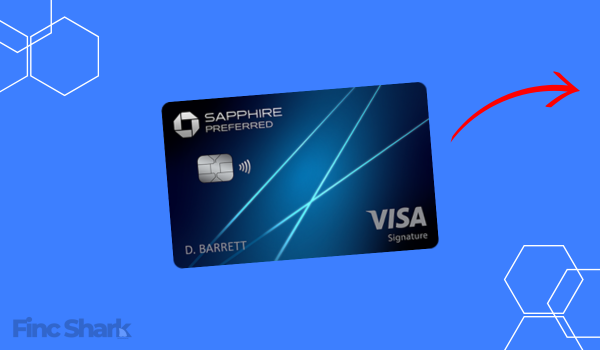
The Chase Sapphire Preferred® is not just another travel credit card—it’s a gateway to flexible, high-value rewards if you know how to play the game right. Whether you’re a points beginner or already juggling multiple cards, here’s how to unlock every dollar of potential from your Sapphire Preferred.
✅ Eligibility Criteria & Insider Tips for Approval
Getting approved isn’t just about your credit score. While Chase generally looks for a FICO score of 700+, there are hidden criteria most applicants overlook:
- 5/24 Rule: If you’ve opened 5 or more personal credit cards in the past 24 months (from any bank), you’ll likely be denied—even with a perfect score.
- Income Verification: A steady income above $35,000/year increases your odds. Self-employed applicants should include gross annual income, not net.
- Existing Chase Relationship: Having a Chase checking or savings account may slightly improve approval odds.
- Avoid Applying After Big Loans: Applications right after auto loans or mortgages can trigger denials due to temporary drops in credit age or utilization.
🛠️ Pro tip: If denied, call the Chase reconsideration line within 30 days. Many denials are reversed after a 10-minute phone call explaining your case.
🧠 Step-by-Step: How to Apply for the Chase Sapphire Preferred®
- Check Pre-Approval on Chase.com Use the pre-qualify tool to avoid hard inquiries if you’re not a good match.
- Gather Your Info Have your Social Security Number, annual income, monthly rent/mortgage, and employer ready.
- Use a Clean Browser or Incognito Mode This avoids cookie tracking and may show enhanced welcome offers (e.g., 90,000 or 100,000 points).
- Apply Online, Not In-Branch Online applications are faster, often processed within minutes.
- Wait for Decision or Call Reconsideration If marked for “pending,” don’t panic. Most are resolved within 3-5 business days.

💬 Real Questions Most People Don’t Ask (But Should)
Q1: Can I have both the Sapphire Preferred and Reserve?
No—Chase doesn’t allow customers to hold both Sapphire cards simultaneously. You must choose one or product change after one year.
Q2: Do authorized users earn bonus points?
They don’t earn separate bonuses, but their spending counts toward yours. You can add authorized users for free, which helps earn rewards faster.
Q3: Are point redemptions better via Chase Travel or partners?
Chase Travel gives you 25% more value per point, but transfer partners like Hyatt or Virgin Atlantic often offer outsized value (e.g., 2–5 cents per point on luxury stays or business class tickets).
Q4: What happens if I downgrade or cancel the card?
You’ll lose premium travel protections and ability to transfer points. Consider downgrading to a Chase Freedom Unlimited® to preserve your credit history.
Q5: Do DoorDash credits expire monthly?
Yes, they don’t roll over, so use them by the end of each month to avoid losing $10 in value.
Q6: Can I use this card internationally?
Yes, with no foreign transaction fees. It’s a great option for booking hotels, local transport, and dining abroad.
⚡ Optimization Hacks You Won’t See on Most Blogs
- Combine Points from Other Chase Cards: If you also have a Chase Freedom Flex® or Ink Business Cash®, you can pool all points into your Sapphire account to redeem at 1.25x or transfer to travel partners.
- Use Chase Travel for Hotel Deals + Annual Credit: Booking hotels through Chase Travel earns 5x points AND applies to your $50 annual hotel credit—effectively reducing your annual fee to $45.
- Book Flights with Chase, But Transfer for Hotels: Chase Travel prices for flights are competitive, but hotel points go further when transferred (Hyatt redemptions start at just 5,000 points/night).
- Track Limited-Time Partner Offers: Occasionally, Chase offers boosted transfer rates (e.g., 30% more to British Airways or 50% to Marriott Bonvoy).
🔄 Alternatives & Strategic Combos
| Card Name | Best For | Annual Fee | Key Difference |
|---|---|---|---|
| Amex Gold® | Dining & groceries | $250 | Higher fee, better restaurant earn |
| Capital One Venture Rewards | Simplicity, flat-rate travel | $95 | 2x on all purchases, no categories |
| Chase Sapphire Reserve® | Luxury perks & lounges | $550 | Priority Pass, 3x on travel & dining |
If you travel occasionally and want maximum value at minimal cost, the Sapphire Preferred remains the sweet spot in the market. For heavy travelers, upgrading to Reserve later might make sense once you’re used to the Chase ecosystem.
🔚 Final Thoughts: Is It Still Worth It in 2025?
Absolutely. Despite new players in the market, the Chase Sapphire Preferred® continues to punch above its weight. With no foreign fees, elite travel protections, and a lucrative bonus offer, it fits both beginners and seasoned travel hackers.
🧭 Whether you’re saving up for a round-trip to Tokyo or a luxury hotel in NYC, this card delivers real, tangible value that most $95-fee cards simply can’t match.





